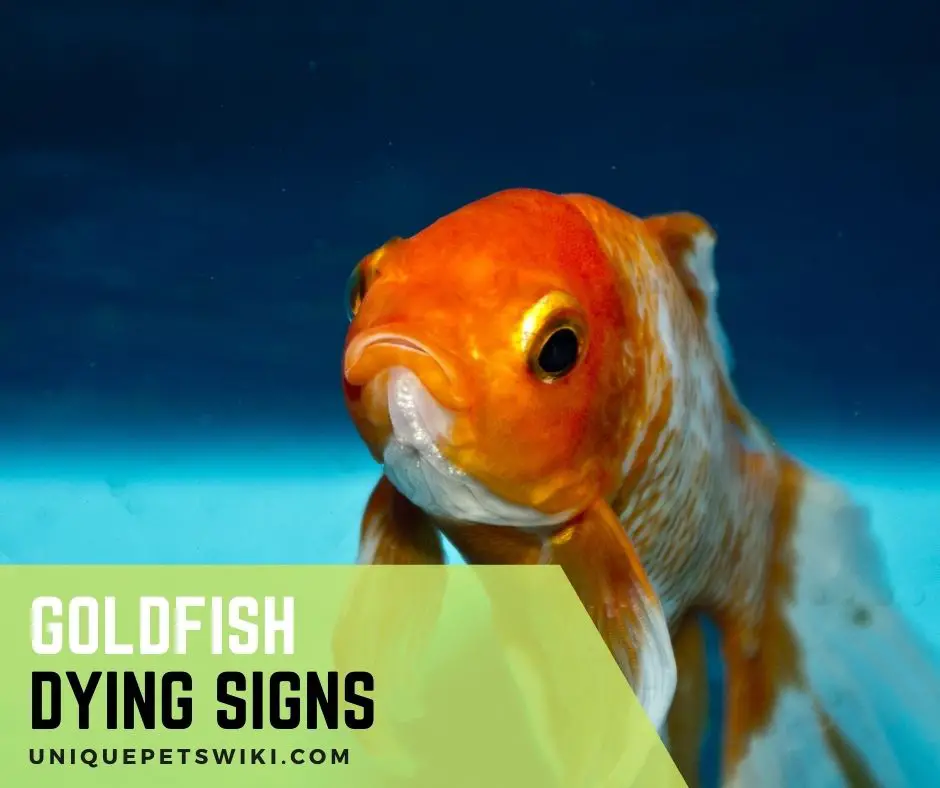Goldfishes are amongst one of the most popular ornamental fishes in the world. Their history began in the 1200s when they were kept as a symbol of wealth in ponds outside the home.
Later in the 1500s, goldfish owners started keeping them indoors in bowls. Amazingly, goldfishes are not only beautiful but can also live up to 20 years with proper care and housing.
Even so, being living things, they are not immune to illnesses. But, with proper care and management, you can minimize those illnesses and diseases.
It is critical to understand your ailing goldfish’s signs and symptoms for early treatment. Otherwise, prolonged illnesses can only lead to the death of your goldfish.
In this article, we will give you the signs and symptoms of an ailing goldfish. And dying characters, as well as tell you how to prevent diseases and illnesses in your goldfish.
Contents
15 Goldfish Dying Signs
First, it is critical to understand that most dying signs that your goldfish may show are due to impoverished water conditions.
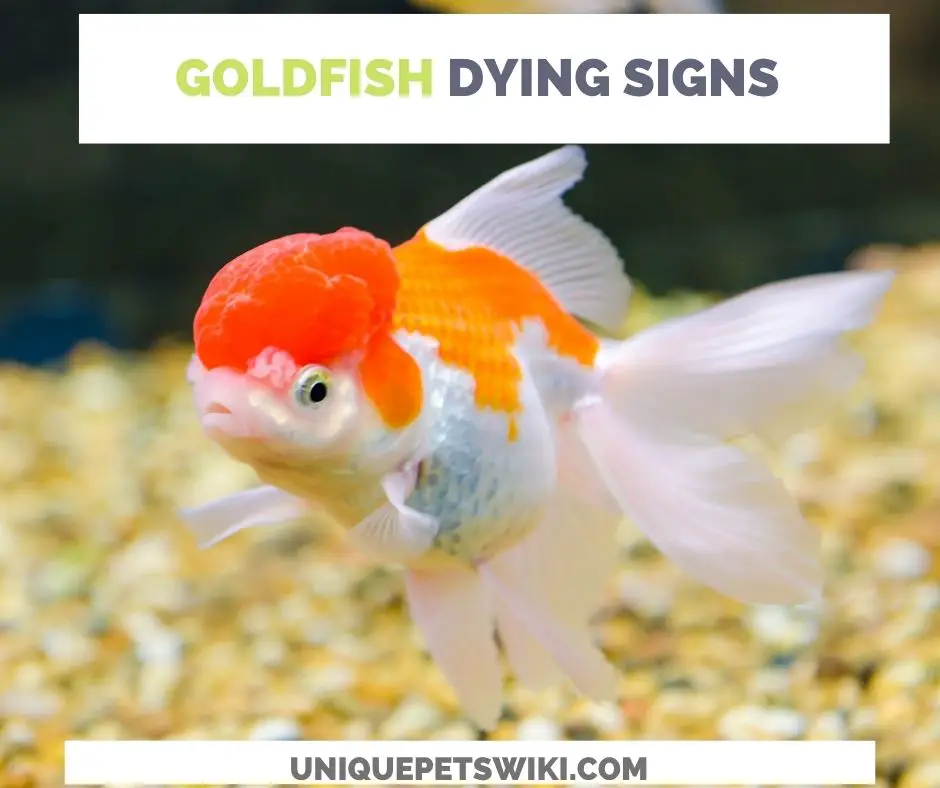
Goldfishes are pretty sensitive to water and environmental conditions. With good water and suitable habitat, you can keep your goldfish happy, healthy, and beautiful.
So, does your goldfish look sick and almost dying? Here is a list of dying fish’s signs and symptoms.
- Lack of appetite
- Gasping for air
- Skimming
- Rapid breathing
- Lying at the bottom of the tank
- Erratic swimming
- Rubbing against surfaces
- Folded or torn fins
- Discolored spots
- Lumps or bumps
- Protruding eyes
- Pale gills
- Bloating
- Milky white areas
- Ragged appearance
How To Tell If Your Goldfish is Sick?
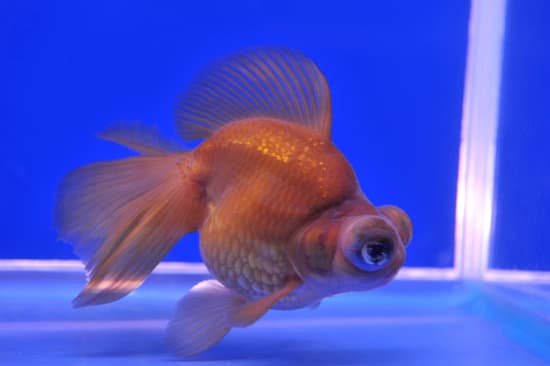
The only way to save your sick goldfish is by early diagnosis. And, early diagnosis requires you to identify your ailing goldfish signs and symptoms during the initial stages.
For this purpose, we will give you some of the most common signs of a sick goldfish in this section.
Keep reading!
Loss of Appetite
Loss of appetite is the first sign of an ailing goldfish. Also, it is common in most health issues in goldfishes.
Therefore, it isn’t easy to give a diagnosis using this sign. If your goldfish is not eating, you should look for other signs before giving a diagnosis.
Loss of appetite can also be a sign of a stressed goldfish. Hence, it is critical to thoroughly observe your goldfish’s living conditions before calling your aquatic vet.
Milky White Areas
Milky white areas around your gold fish’s tail or fins can be a sign of fin rot. Goldfish with fin rot may also appear with a ragged appearance.
Therefore, to save your goldfish from dying due to fin rot, it would be best if you were able to identify any physical change in your goldfish.
Fin rot is spread from one fish to another. Thus, it is critical to separate sick goldfish from healthy ones.
Also, it would help if you immediately cleaned the tank to prevent other fishes from getting fin rot.
Folded or Torn Fins
Folded or torn fins are a sign of fungal infections in goldfishes and most other fishes. When your goldfish is suffering from fungal infections, they may also appear with protruding eyes, bloated, pale gills, lumps, and discolored spots.
Fungal infections are caused mainly by impoverished habitations. Thus, it is critical to observe your goldfish’s water and habitat conditions to prevent fungal infections.
Good read: https://animals.mom.com/goldfish-ripped-tail-4408.html
Erratic Swimming
Improper feeding or swim bladder are the primary causes of erratic swimming in goldfishes.
Additionally, a goldfish experiencing a swim bladder may swim upside down or rub against surfaces.
Therefore, it is essential to observe your goldfish swim behavior to spot a goldfish suffering from swim bladder.
Breathing Disorder
Breathing disorders such as gasping for air, rapid breathing, and skimming at the top of the tank are signs of poor habitation.
Thus, if you see your goldfish experiencing those signs or even staying longer at the bottom of their tank, you should immediately check on your fish’s living conditions.
Loss of Weight
Goldfishes have a huge appetite and will gladly look excited during every feeding session. But, if you see your goldfish refusing to eat and losing weight, it can be a sign of internal parasites.
Thus, it is your responsibility as a pet owner to call your aquatic vet for early diagnosis.
Prolonged internal parasite invasion in your goldfish can cause death.
Lethargy
Goldfishes should look active and happy. Thus, any sign of prolonged immobility, especially at the bottom of their tank, is a red alert.
It can mean your goldfish is either stressed due to poor habitation or is sick. Lethargy is a common health issue in goldfishes.
Thus, it is critical to seek help from a vet for a proper diagnosis.
Can You Treat A Sick Goldfish?
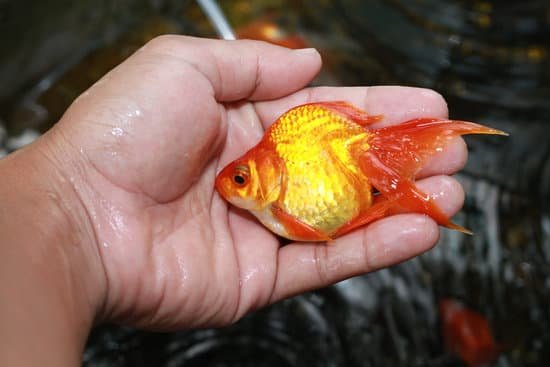
Bad water conditions, poor diet, and improper habitation are the primary causes of illnesses in goldfishes.
As such, it is possible to keep your goldfishes healthy and happy in captivity with proper care and management.
Goldfishes have a longer lifespan compared to most other ornamental fishes.
Thus, it is critical to keep them healthy and free from parasites to enjoy their long lives fully.
Here are some of the illnesses you may treat your goldfish at home.
Three Symptoms That You Can Treat At Home
Some illnesses are mild, and you can treat them effortlessly at home. However, some are fatal and may require quick medical attention.
Before treating your goldfish at home, it is critical to be absolutely sure of the disease you are about to treat.
The wrong treatment can cause more harm or death to your goldfish. Therefore, the first treatment for any disease should be identifying the symptoms of a sick goldfish.
Fungal Infections and Tail Rot
Fungal and tail rot are common infections in fishes, including goldfishes. Luckily, those infections are brought about by poor habitations and thus can be avoided.
Additionally, it’s possible to cure them, and you can quickly treat them at home. For home treatment to become fully effective, you must accurately identify the infection and provide proper treatment.
You can treat fungal and tail rot in goldfishes at home by simply removing active carbon filters in your goldfish tank.
Additionally, you should add commercial Maracyn-Two to treat fin rot and methylene blue for fungal infections.
However, these chemicals can harm your goldfish if there are no fungal or fin rot infections.
Therefore, you must be sure your fish is suffering from those infections before using those chemicals.
Parasites
Parasites are also common health problems in goldfishes. You can eliminate goldfish parasites at home.
Some of the most common parasites are ich, anchor worms, and lice. You can tell your goldfish has parasites if it has white spots on its body.
Use the following method to treat diseases caused by parasites and eliminate those parasites.
- Gradually raise your goldfish aquarium temperature to 860F for at least ten days.
- Add a tablespoonful of aquarium salt to your goldfish tank for every five gallons of water.
- Regularly change the aquarium water.
- Gradually reduce the water temperature back to normal.
This method helps eliminate ich and lice parasites. However, to remove anchor worms, you need to use tweezers.
But fish are sensitive, and you can badly harm them if you are not careful. Thus, you should be gentle and return them to the water every minute to avoid causing them more harm.
Swim Bladder
Goldfishes with swim bladder experience difficulty in swimming. They lose balance and thus appear to swim erratically.
Unfortunately, you cannot treat your goldfish from the swim bladder by changing or treating the water. Instead, you should provide a suitable diet.
The best diet to elevate the swim bladder should be low on proteins and high in fiber. Therefore, food such as frozen peas makes a good diet for goldfish as they are high in fiber.
Additionally, they can easily sink into your gold fish’s tank, making them easy to find.
When do You Need a Vet?
Goldfish are hardy and low maintenance and are not easily susceptible to diseases.
Sometimes, their conditions can get worse and thus require medical attention. Unlike before, when it was challenging to find ornamental fish vets, there are available fish vets worldwide.
However, those fish vets are not widely spread like cat and dog vets. Therefore, before taking your goldfish to the vet clinic around you, inquire if the services are available.
The fish vet can perform various tests to determine the underlying causes of your goldfish’s sickness.
These tests can go from simple blood tests, ultrasound to complicated surgery. Your goldfish vet may recommend antibiotics to treat your pet.
Whatever your vet pet’s observations may be, follow their advice to the letter to prevent further complications.
Remember that even after treatment, the goldfish may die.
How to Prevent Sickness in Goldfish?
The best way to keep your goldfish healthy is by preventing illnesses. Goldfish are easy to maintain with proper care.
Let’s see how you can prevent your goldfish from getting sick.
Clean the Tank Regularly
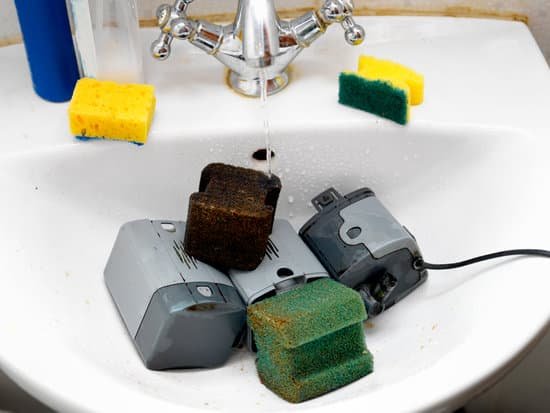
Cleaning your goldfish aquarium is the best way to prevent it from getting sick. Goldfish highly require quality water and a clean environment.
Through cleaning, you eliminate bacteria that grow in your fish’s tank, causing health issues.
The best way to keep your goldfish aquarium clean is by:
- Removing excess chemicals by changing several gallons of water weekly.
- Immediately gravel any algae in your goldfish’s tank.
- Pruning overgrown plants in your goldfish aquarium
- Ensure to replace the charcoal filter at least once a month.
- Don’t use harmful chemicals when cleaning to avoid harming your goldfish.
Proper Nutrition
A good diet is a key to a healthy goldfish. There are varieties of available commercial food for goldfish in the market.
Last update on 2023-01-02 / Affiliate links / Images from Amazon Product Advertising API
However, when picking the one for your goldfish, ensure that it is well-balanced and safe.
A good diet for goldfish should contain food that is low in proteins and high in fiber.
Additionally, ensure to feed your goldfish only a tiny amount once per day to prevent them from bloating.
Overfeeding does more harm than good to your goldfish. Besides, any leftover spoils the water quality leaving your goldfish more vulnerable to diseases.
Buy Their Feed from Trusted Sources
Last update on 2023-01-02 / Affiliate links / Images from Amazon Product Advertising API
Good food should be clean and safe for your goldfish. Contaminated food can cause a variety of health issues.
Thus, it is necessary to acquire all your goldfish food from a trusted supplier.
Maintain Water Quality
Water quality is quite essential for keeping your goldfish healthy and happy. The best water for goldfish should have the required temperature, which is 50-780F.
The water should also have adequate oxygen and goldfish release a lot of waste. As a result, there will be high levels of ammonia in their tank.
The best way to maintain water quality is by regularly changing the water and testing it.
Poor Hygiene When Handling
When handling your goldfish, you might have to submerge your hands inside their tank.
It is critical to ensure that you thoroughly clean your hands with soap and water to prevent destroying your fish’s water quality.
It would help if you also cleaned your hands after handling them, as your goldfish water may contain bacteria and fungi.
Quarantine your Goldfish
Separating your sick goldfish from the healthy ones is an excellent way to prevent the spread of diseases.
Goldfish owners should have a hospital tank where they put sick fish while on treatment.
You can return the sick fish to their usual tank once they are completely healed.
Wrapping Up
Goldfish are perfect pets for aquarium lovers. They are resilient and require low maintenance, making them ideal even for beginners.
With proper care, goldfish can live a long life free from diseases. And, even when they get sick, it is easy to treat them at home, and the cost of treating them is low.
However, sometimes they succumb to their illnesses, especially with late diagnosis.
Therefore, it is good to learn all signs of sicknesses in goldfishes to prevent them from dying before their time.
Gold Fishes can live for up to 20 years in captivity with proper care. We wish you all the best with your goldfish!
